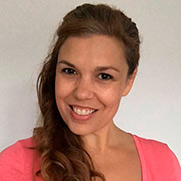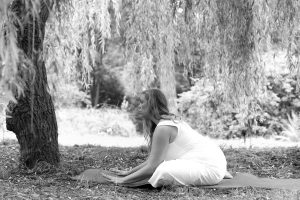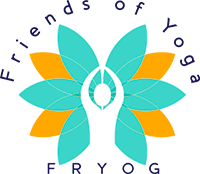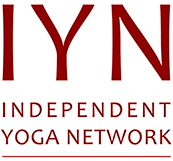To understand stress, you have look back into the depths of human evolution. Prior to the modern age the stressors that we faced were primal, tangible things like predators, drought, injury and starvation. Our body has evolved to prepare us to combat these external events; it is a necessary and normal response of the internal world of our body, on a cellular level, to the outside world. After the stressor has gone, in an ideal world, our body will restore the balance, of the internal environment of our body. This is called homeostasis.
The problem occurs when this normal stress response is repeatedly switched on, or your body cannot appropriately restore balance. Then what is a normal healthy process can become harmful and cause illness.
Unfortunately, in the modern age this is common due to what causes us stress; we are no longer running away from bears. Our stress involves money, deadlines, traffic jams, social and psychological events. Of course, at the moment this unrelenting uncertainty of living through a pandemic is a major stress for everyone; the fear of what a post-Covid world may be like. These issues are long term, unrelenting and difficult to fix; they are not resolved by running away as you would with a predator for example, (although in most cases doing exercise of running can be a key tool for restoring some balance to the body.
The key here is that the PHYSIOLOGICAL RESPONSE IN THE BODY IS THE SAME matter what the stressor is. Your nervous system does not differentiate between the bear or the deadline for example. Most importantly the FEAR OR ANTICIPATION OF STRESS also causes the same physiological response. So, you don’t even have to be experiencing something stressful, just catastrophising about it and your body will go into ‘fight or flight’.
This whole process is regulated by our nervous system and hormones. Specifically, the Autonomic Nervous System (ANS) which has two divisions; the Sympathetic Nervous System (SNS) which controls the stress of ‘fight and flight’ response and the Parasympathetic Nervous System (PNS) which controls the ‘rest and digest’ response. They work together to maintain homeostasis or BALANCE of the body’s internal environment. And they control how your entire body systems respond to what is happening externally by increasing some functions and dialling down others.
If you are experiencing a stressful response your body is going to divert energy away from any function that it considers not essential to this fight or flight situation. For example, if you imagine that your house is at risk of being destroyed by a tornado, you’re not going to start renovating the kitchen. You need to prepare for action not growth and repair.
Your cardiovascular system is ramped up by the SNS preparing you to run or fight; the heart rate, blood flow and blood pressure increase. In addition, certain functions are toned down; immunity, digestion, growth or repair are prime examples.
Remember that this is normal, the body responds to a stressor and then restores homeostasis. However over time, with long-term, unresolved stress these normal functions deplete the body. All of our resources have been used up and a process which was healthy becomes a driving force in illness. This may lead to all sorts of chronic health conditions such as heart disease, immune suppression, ulceration of the GIT, diabetes, chronic fatigue, fibromyalgia, muscle wasting…. the list goes on.
All of this sounds very depressing doesn’t it? Especially in the current world situation, everyone is stressed, how can you not be? This pandemic will have long reaching consequences beyond the effects of the virus itself.
However, the most amazing thing is that we can do something about it. We must find the right tool for us to help restore balance physically and mentally.
There are many tools, for some people its exercise, in whatever form suits you. Yoga is often a key tool that is advised and yes absolutely a regular physical yoga practice will work in a similar way to exercise.
The benefits of a yoga practice is not just found in its asana practice. This is especially true with the state of modern yoga; it is so focused on a spiritually watered-down gymnastic routine that strips the practice of its true depth and wholistic benefits. The integral benefit of Yoga is found in the Pranayama or breathing practices, the relaxation practices and the meditation tools.
Meditation or mindfulness as it is often called, which is just a secularised form of meditation is the common practice which people are advised to do for stress management.
I have taught different types of meditation for 16 years in my yoga classes and to my patients and if it works for you, then absolutely wonderful, please do it as much as you can, the health benefits are undeniable. However, there is a large population of people who have tried and it and given up because they find it frustrating; their minds are too busy to focus and it makes them more stressed.
As a Yoga Teacher you can identify these people as they are the ones who can’t lie still at the end of the class in Shavasana or leave the class before this part. Generally, I’ve found these people are the ones who need the benefits of meditation more than anything, as this hectic mind is a result of anxiety, catastrophisation, fear or overwhelm… and it is what is potentially stressing them out in the first place.
My go to tool for myself and for all my clients, whether they are stressed or not is something called Yoga Nidra. It basically means yogic sleep and it is hands down one of the most amazing practices I have had the privilege of experiencing and facilitating for others. So far I have not met anyone who didn’t enjoy it or reap the benefits and the amazing thing is that you get all the benefits of meditation without any of the formal trappings or pressure.
You basically get as comfortable as possible; I like to ask my students to make a nest of blankets, cushions and pillow. You can close your eyes and all you do is listen and the facilitator will guide you. It is an ADAPTOGENIC PRACTICE; you will get from the practice what you need at that time. Most of the time to begin with it means that you fall asleep. And that is amazing in itself. One of the big things is that we need to give ourselves permission to rest and when we do that our body is given a chance to replenish and the road to balance can begin.
Yoga Nidra has personally helped to manage the stress of completing my Masters in Osteopathy, helped through two pregnancies and one home birth, (without any pain relief I may add). I now have two children, the oldest of which is three, and they do not sleep. I am chronically sleep deprived and I use Yoga Nidra whenever I have 20 minutes to rest and it is hands down the thing that has stopped me going over the edge mentally and physically. This is particularly true over the last year when you add setting up a business and a global pandemic into the mix.
I prescribe Yoga Nidra to ALL my patients; I co-create specific yoga nidra scripts and record them for some patients with specific pain conditions. Pain is exacerbated by stress and is often a manifestation of unresolved stress and this is a key management tool.
At the moment, I would say EVERYONE needs to give themselves permission to rest and could do with a bit more Yoga Nidra in their life, if you have tried it you will know exactly what I mean. It is the panacea for whatever ails you at the moment and you will thank me for it if you give it ago.
I am running monthly donation-based Yoga Nidras via zoom, you can pay what you can afford and all proceeds go to a charity. My yoga classes will also all have an element of this as do my patient management plans. If you would like to know more I offer a FREE 15 minute consultation to anyone who needs some advice.










